Last updated on September 19th, 2023 by Jules Winnfield
Starting the morning without a cup of coffee is almost unheard of for some people. It is one of the most popular drinks in the world and for good reason.
Not only does coffee taste good, but it also gives you an energy boost to help you start your day. Many people will continue to drink coffee throughout the day with 4-5 cups being the recommended amount.
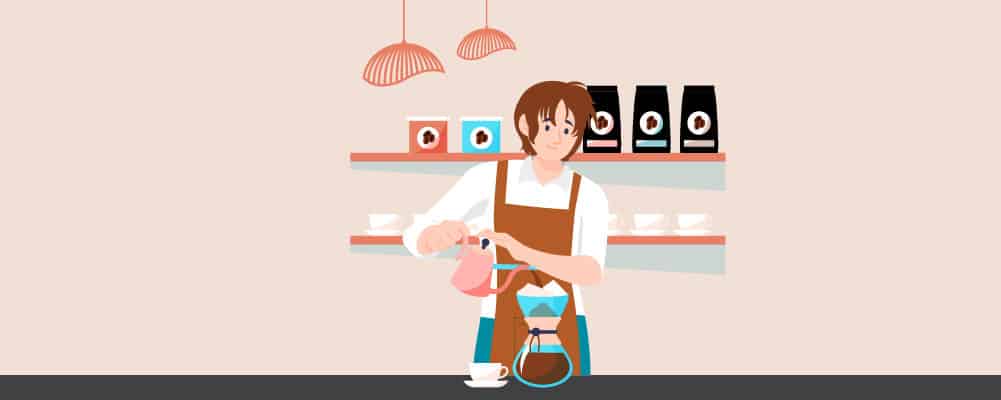
You can make your coffee in the comfort of your home, buy it from a supermarket, or go to a quaint coffee shop and enjoy a cup with friends. Anywhere you go, you can be assured that you can get a decent cup of coffee. Even if you are traveling abroad, different countries usually have their own variations of popular coffee drinks.
Coffee is also very versatile, it goes well with so many flavors and isn’t exclusive to drinks. There are coffee cakes, coffee marinates, and even coffee scrubs. This variety is also prevalent in the menus at coffee shops.
Even for people who frequently drink coffee, the number of coffee types can be overwhelming. So, we put together the ultimate guide to coffee to help you easily understand what each coffee type is and some popular variants of the drink.
20 Different Types Of Coffee
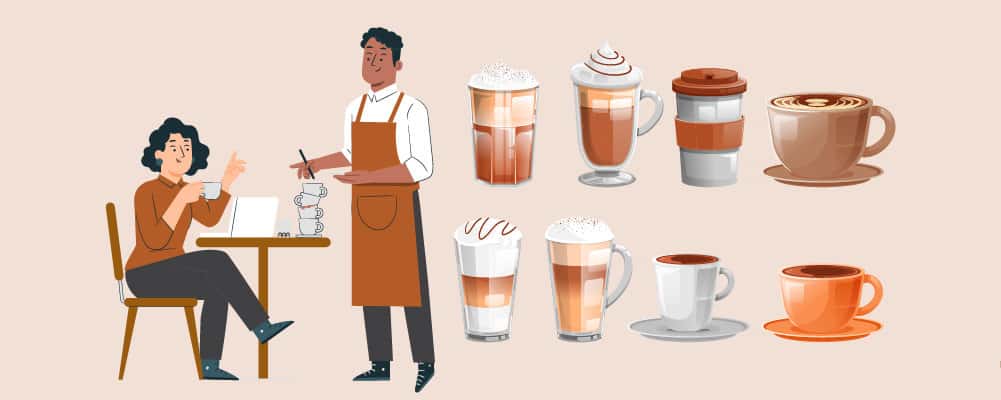
Before we get into the different types of coffee drinks, it is important to note that the taste of the coffee can vary depending on what coffee beans are used, amongst many other variables (water, temperature, grind profile, pre-emersion, brew time) that we wont go into in this article.
While there are four different varieties of coffee beans, the two main ones are Arabica and Robusta.
- Arabica
- The more popular of the two and considered a higher quality bean.
- Generally has a sweeter and less bitter taste when compared to Robusta beans, which makes it ideal for black coffees.
- Robusta
- Generally cheaper than Arabica and is mainly used in instant coffee.
- Robusta has a 2.7% caffeine content compared to Arabica which has 1.5%, which makes it great for espressos.
The other 2 bean types are Liberica and Excelsa. Liberica is a love-it, or hate-it bean with a nutty and woody flavor, whereas Ecelsa has the notes of a light roast with the flavors of a dark roast. You typically won’t find these beans by themself and are mainly blended with one of the most popular types of beans.
Coffee beans can come in light, medium, and dark roasts. Just like coffee bean types, the roast of the bean can also affect the flavor of the drink. The general flavor profiles are:
- Light – Slightly higher caffeine content compared to the other roasts. Provides a mild and floral aftertaste; white coffee is a version of light roast with a nutty smooth flavor.
- Medium – Balanced flavor between the floral notes of a light roast, and the deep roaster flavor of a dark roast.
- Dark – Thicker body and a roasted flavor. The least amount of caffeine content out of the 3 roasted types since some of it is cooked off.
The caffeine difference between the roasts is so minimal that a cup of coffee made with a light roast will have essentially the same caffeine content as a coffee made from a dark roast.
Now that you know the coffee beans, here are 20 ways in which they can be used to make delicious beverages!
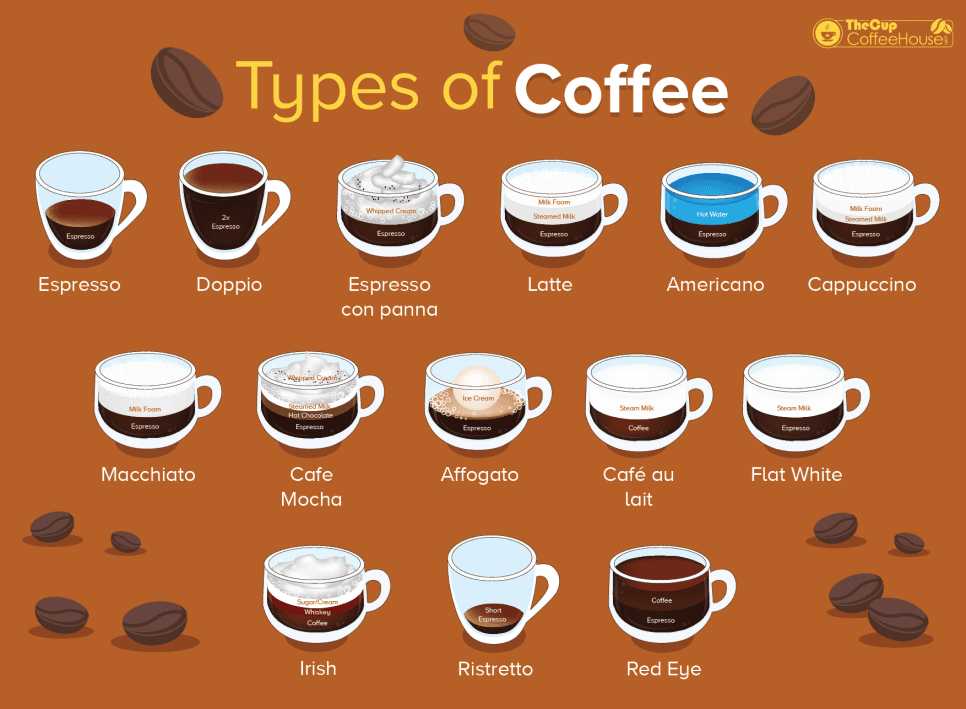
Decaf
Decaf coffee isn’t a typical type of coffee, because theoretically every type of coffee could be made into a decaf one. In the case of decaf, it’s the beans that are different, not the composition or brewing methods of the drink.
Decaffeinated coffee beans are made when the roasters remove most of the caffeine from the beans while they’re still in seed form. It should be noted that decaf coffee isn’t caffeine free, but it does have low caffeine content.
To meet the United States standard for it to be classified as decaffeinated, at least 97% of the original caffeine content has to be removed.
There are many ways that caffeine is removed from coffee beans, but the most common is to use solvents or water. The process of removing the caffeine leaves the taste of the coffee largely unaffected.
While decaf coffee has similar health benefits compared to regular coffee, it is recommended for pregnant women to switch to decaf as caffeine can harm unborn babies.
Espresso
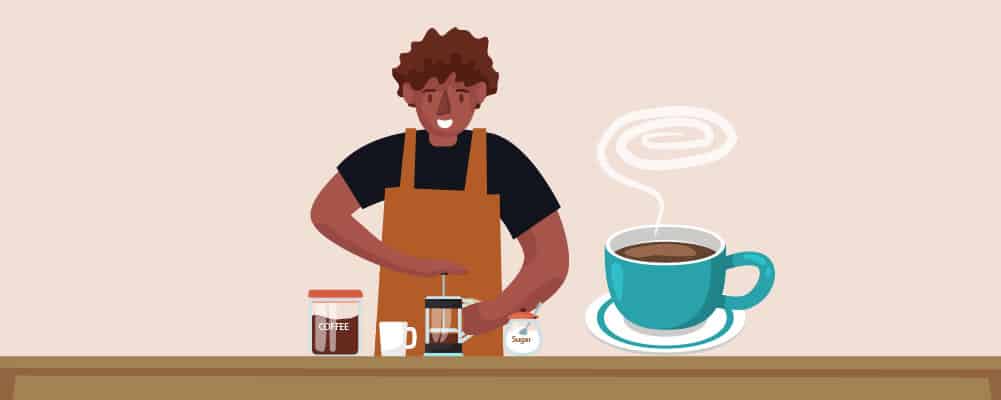
Espresso is the most common way in which coffee is prepared. It is also the basis for a lot of coffee drinks like lattes and cappuccinos.
Espressos are made when hot water is forced through finely-ground coffee beans to get a highly concentrated liquid. There is a high grounds to water ratio when making espresso and it is typically served in a one-ounce cup.
Once the hot water has been pushed through the grounds a coffee ‘puck’ is left behind which is usually discarded or used to deter pests in gardens.
Doppio (commonly known as a double espresso) is when there are 2 shots of espresso in a two-ounce cup. On the other hand, you can order a ristretto which is half the size of an espresso. A ristretto (which means restricted in Italian) has the same amount of caffeine as an espresso, it is just condensed into half the amount of liquid.
A typical dessert made from espresso is affogato, which means ‘drowned’ in Italian. This is when a shot of espresso is served over a scoop of vanilla ice cream. Italians will typically consume espresso after a meal to help with digestion.
Americano
For people who typically drink black coffee, this is the drink for you. It is a shot of espresso which is diluted with hot water, this is different from brewed black coffee. Americanos have a stronger and bolder flavor when compared to drip coffee.
The espresso is poured over the hot water so that the ‘crema’ isn’t broken, which is a creamy foam that is produced by the coffee machine. It is either half water and half espresso, or ⅓ espresso and ⅔ water. The latter is more common in the United States.
It is said that its origin goes back to WW2 when American soldiers were stationed in Italy. They would mix hot water with their espresso to get a coffee closer to what they’re used to drinking. This is also where the name for americanos comes from since it is the Italian word for American.
An iced Americano is a variation of this popular drink that exchanges hot water for cold water and is served over ice.
Dalgona Coffee
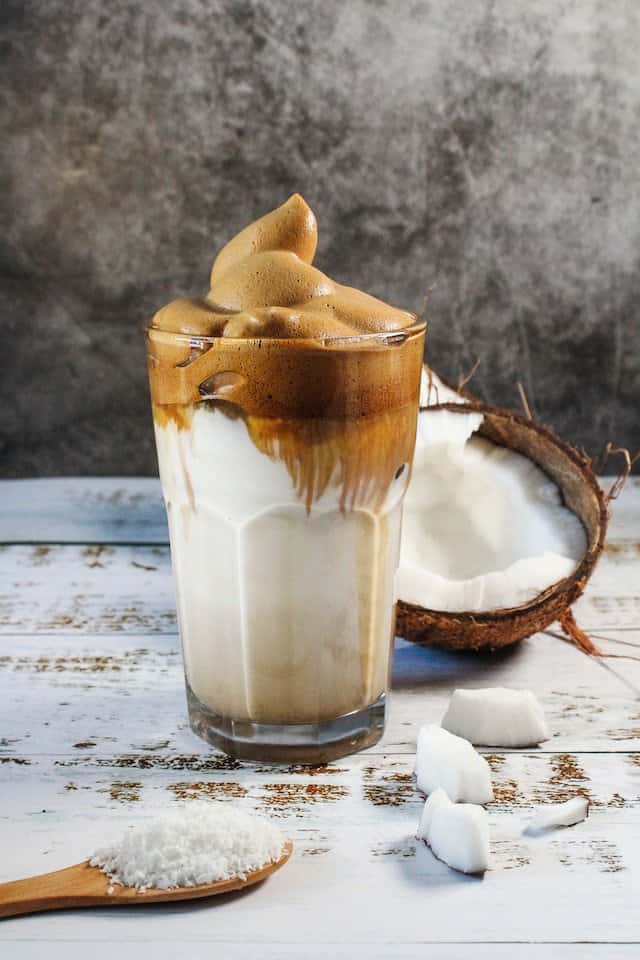
Photo by Tijana Drndarski
This type of coffee is very aesthetically pleasing and comes from South Korea. The word ‘dalgona’ is mainly used to describe a Korean street candy that is featured in the TV show ‘Squid Game’.
This candy is made by melting sugar and bicarbonate of soda, pressing it flat into a disk, and indenting a shape into it.
Dalgona comes from the Korean word ‘dalguna’ which means ‘it’s sweet’ which is why it is used to describe sugary foods. The coffee is named after the candy since it has a similar sweet and caramel-like taste.
This delicious whipped topping is made from instant coffee, sugar, and hot water. It is easy to be made at home which is why it became viral on social media. It is recommended to make it with an electric mixer since it can take about 10 minutes of whisking by hand to get the whipped consistency.
Instant coffee has to be used because it goes through a drying process which allows it to foam.
Dalgona coffee is typically served on top of iced coffee or milk but is gaining popularity as a boba drink topper.
Red Eye
For people who really require a caffeine kick, this is where the red eye coffee comes in handy. Named after the classic ‘Red Eye’ flight which goes from the American west coast to its east coast overnight. This long journey would cause its passengers’ eyes to turn red from exhaustion.
The red eye combines coffee, with espresso. The most common combination is a drip coffee with espresso poured into it. This drink was originally a secret menu item at Starbucks and since then has been joined by a few variations.
These include the black eye which has 2 shots of espresso and the green eye with 3 shots of espresso. The green eye is also known as the dead eye in other coffee shops.
This drink usually comes hot and black, but you can get it cold or with milk. No matter how you prepare it, this drink isn’t for the faint-hearted. We mean this literally as an average cup of red eye coffee contains around 150 mg of caffeine, while a normal drip brew contains around 95 mg of caffeine.
Latte
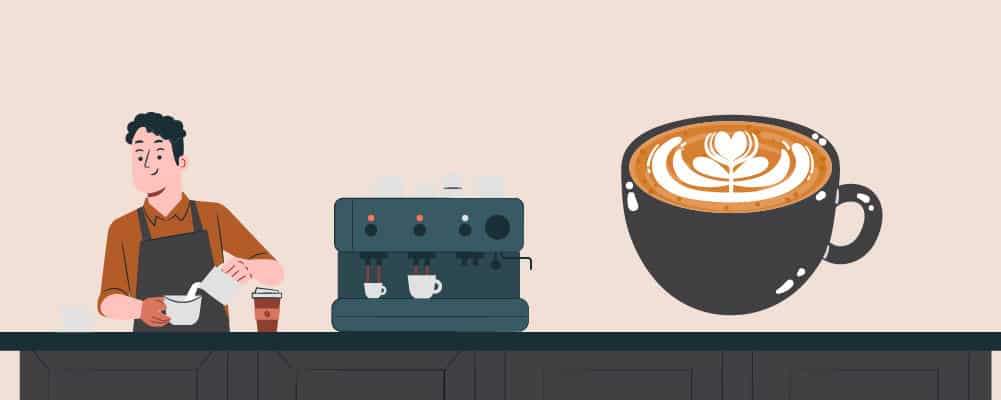
Lattes are espresso-based drinks that consist of ⅓ espresso and ⅔ steamed milk. The steamed milk leaves a thin layer of foam on the top. This thin foam is commonly used to make decorative art, either by moving the milk as it is poured or drawn on afterward with a thin stick. These latte arts can be quite intricate and a skilled barista can draw pretty much anything in the foam.
They are a popular choice for people who enjoy the taste of coffee but don’t like it when it’s strong. This is because lattes are mainly milk and can be served with flavored syrups like vanilla, hazelnut, and pumpkin spice to hide the taste of the coffee. Milk alternatives like soya, hazelnut, and almond are also commonly used in lattes.
The steamed milk can be swapped with chilled milk to make an iced latte. The espresso is usually chilled beforehand or frozen to avoid the drink becoming warm.
Originating from Italy, lattes are one of the beginning coffee house drinks and their first documented use in the English language was in 1867.

Cafe au Lait
This drink in French literally translates to ‘coffee with milk’, and is a part of a traditional breakfast in France and has been around since the 17th century. It is equal parts coffee and milk, and it is traditionally served in a porcelain cup or bowl rather than a glass.
Cafe au laits are commonly mistaken for lattes or white coffees, but there are some clear distinctions.
Lattes are made with an espresso base, cafe au laits have coffee that is either drip brewed or from a French press.
Cold milk is used for white coffees, whereas cafe au laits use warmed or scalded milk. There is also no foam on cafe au lait which is another distinction from lattes.
This is a great coffee for those who prefer a simpler drink but still want to sound fancy when ordering.
Frappe
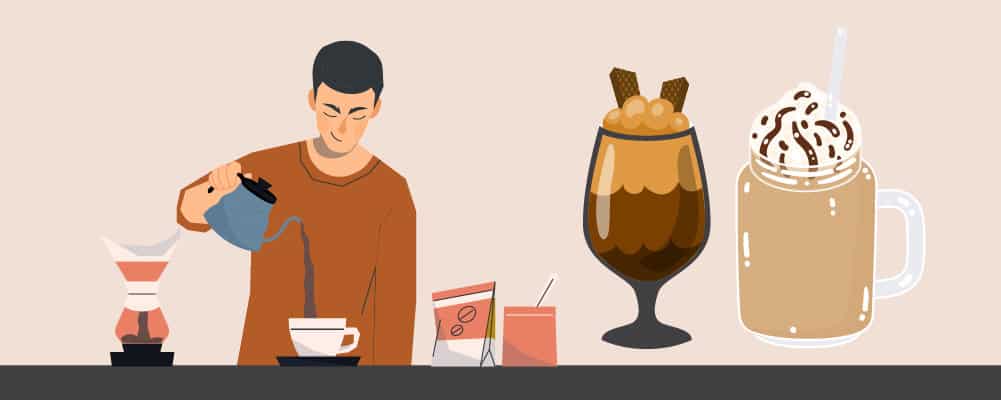
A common misconception is that a frappe is a milk and coffee drink that is blended with ice and topped with cream. This creates a milkshake-like drink which is actually called a frappuccino and is sold exclusively at Starbucks. The name frappuccino is a portmanteau of frappe and cappuccino.
An actual frappe is made with instant coffee, water, and ice cubes that are shaken together in a shaker (totally different from shaken espresso). The use of instant coffee allows the frappe to get its distinctive froth on top. The name comes from the French word ‘frappé’ which describes a drink that is chilled with ice.
The first frappe was made in 1957 in Greece by Nestlé representative Giannis Dritsas. He was exhibiting a new product at the Thessaloniki International Fair which was a chocolate beverage made in a shaker. He then used the shaker to make himself a coffee with cold water and ice cubes since he couldn’t find hot water.
Since then, this drink is very popular in Greece and Cyprus and has been gaining popularity around the world since tourists tried it in mass during the 2004 Olympic Games in Athens.
Flat White

Flat whites can be simply described as stronger lattes. They consist of espresso and steamed milk. Generally they come with more espresso (double shots) than milk and served in 5-6 oz. cups.
It is up for debate on whether it originated from Australia or New Zealand, but the earliest documented version of a flat white is from Australia in the 1980s. It wouldn’t be until 2005 when the flat white was introduced to the UK and then a further 10 years until it was brought to American coffee chains.
With flat whites and lattes, the steamed milk is usually folded as it steams to give it a smooth texture, this is called microfoam. However, unlike lattes, flat whites typically have little to no foam on top. This lack of foam creates a uniform flat brown color which is where flat whites get their name.
A variation of a flat white is called a piccolo, which is just a small version of a flat white. It is also called a piccolo latte and is served in a small glass.
Raf
This Russian coffee is named after Rafael Timerbaev, a customer in a coffee shop who asked for something new in 1996-1997. This experimental drink was cream, 2 tablespoons of sugar, and a shot of espresso. It was so popular that it was eventually added to the Coffee Bean it was ordered at.
It is a very popular drink in Moscow where it was first invented, but has since spread in popularity throughout Russia and bordering countries.
Today’s version consists of a shot of espresso, a tablespoon of plain sugar, a tablespoon of vanilla sugar, and a dash of cream all steamed together. Sometimes the vanilla sugar is replaced with vanilla syrup.
The result is a creamy and sweet drink that varies from a latte with its lack of milk, use of vanilla sugar, and that it is all steamed together instead of mixed in the mug. It has been described as tasting like drinking vanilla ice cream with a hint of coffee.
Some variations include adding honey, lavender syrup, or cinnamon.
Cortado
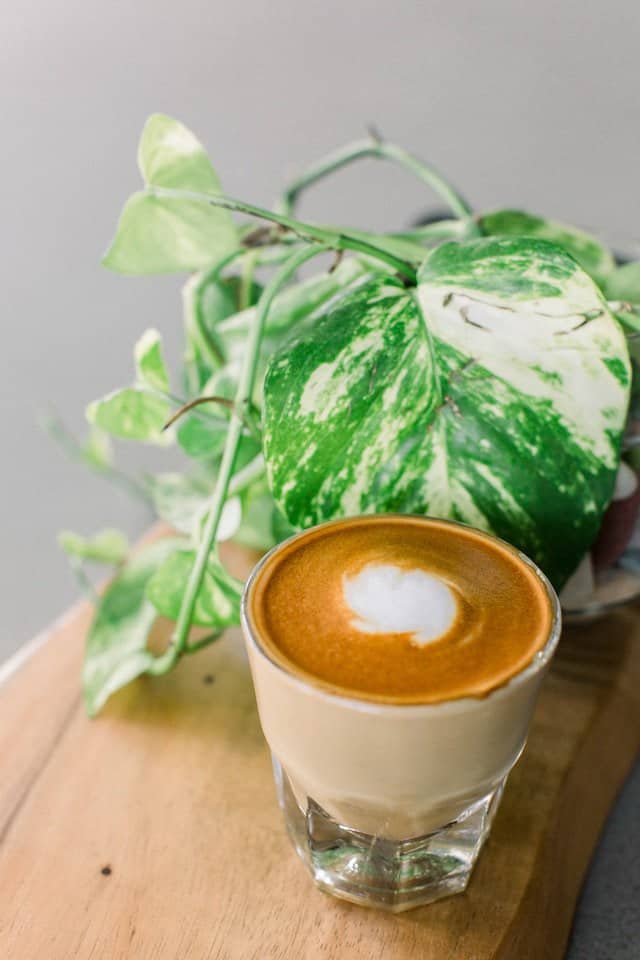
Photo by Jenna Neal
Coming from the Spanish word ‘cortar’ which means to cut, a cortado is half espresso and half steamed milk. This means the milk cuts into the bitterness of the coffee. It is typically served in a five-ounce glass.
The milk has little to no foam with it, so its purpose is to balance the acidity of the coffee instead of adding a creamy taste. Unlike other coffee and milk drinks, cortados have no layers and have a uniform color throughout.
In San Francisco, you may find a similar drink called a Gibraltar, this is a cortado served in a specific glass of the same name.
Espresso Con Panna
Espresso con Panna translates to espresso with cream in Italian and is a typical dessert coffee. This means you are more likely to find it being drunk after a meal instead of being ordered by itself at a café.
It is a shot of espresso served with vanilla cream on top. It is usually considered a more old-fashioned drink when compared to lattes or cappuccinos.
In England and France, it is also known as cafe Viennois and cafe Vienne in the US.
It is deceptively simple and worth a try. You can even make it at home if you have an espresso machine. You can either drink the espresso through the cream or mix it together if you aren’t a fan of getting whipped cream all over your top lip.
Irish Coffee
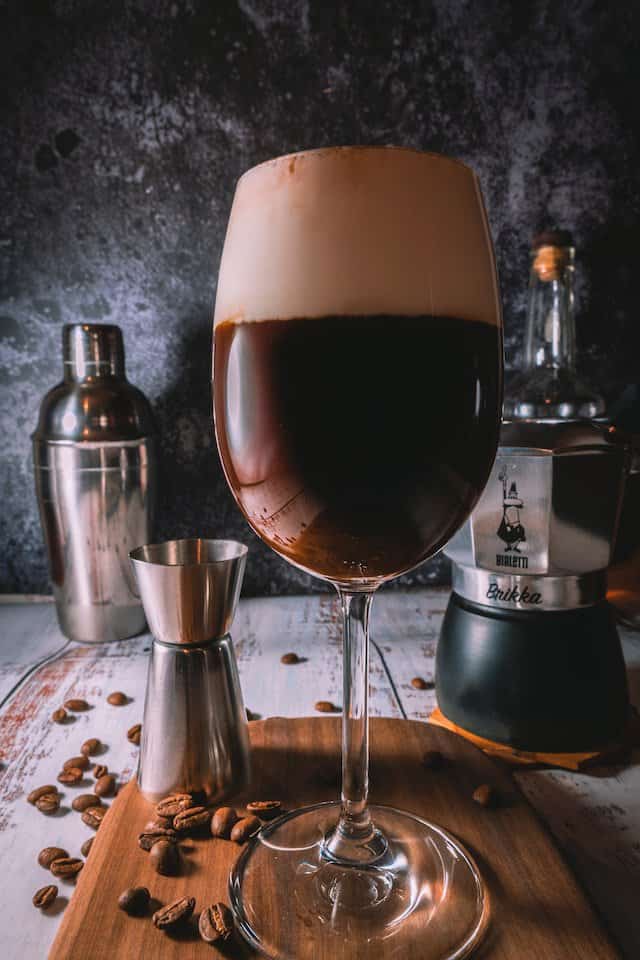
Photo by Max Nayman
It is a well-known fact that coffee goes great with alcohol, and no one does it like the Irish. This drink consists of coffee, whiskey, and sugar which is decorated with fresh whipped cream. The beverage is drunk through the cream to give it a silky texture.
While some variations include canned whipped cream, traditional Irish coffees use fresh cream so that way it doesn’t separate into the coffee. The amount of cream varies but is generally more than an inch thick.
The story of its creation is that it was created in 1943 by Joe Sheridan, a chef at a small airport. Apparently, he made the drink to keep passengers warm whose flight got redirected to the airport he worked at.
You are more likely to find this drink on a cocktail menu rather than a café menu, but it is still a type of coffee you need to try once you are of legal drinking age. It is the perfect drink to warm your insides during those cold winter months.
Cold Brew
One of the trendiest coffees out there, cold brew has taken the world by storm and is available pre-made in most supermarkets. The technique of cold brewing can be dated back to 17th century Japan where they used this technique to make tea. This is also the country where dirty coffee originated from.
Cold brew is different from iced coffee which is brewed hot and then poured over iced. As the name suggests, cold brew coffee is when the coffee ground is slowly steeped in cold or room temperature water. The steeping process takes about 12-24 hours and most people do it at home in a jar.
Because of this brewing method, cold brew coffee generally has a smoother, less acidic as well as less bitter taste. (You need heat to extract the acidic notes) This makes it a popular choice with one in five Americans consuming a cold brew coffee at least once a week.
Milk, creamers, froth or not, and flavorings are commonly added to cold brew coffee. This is to make the drink smoother rather than cutting the acidity of the coffee like other brewed drinks.
Cappuccino
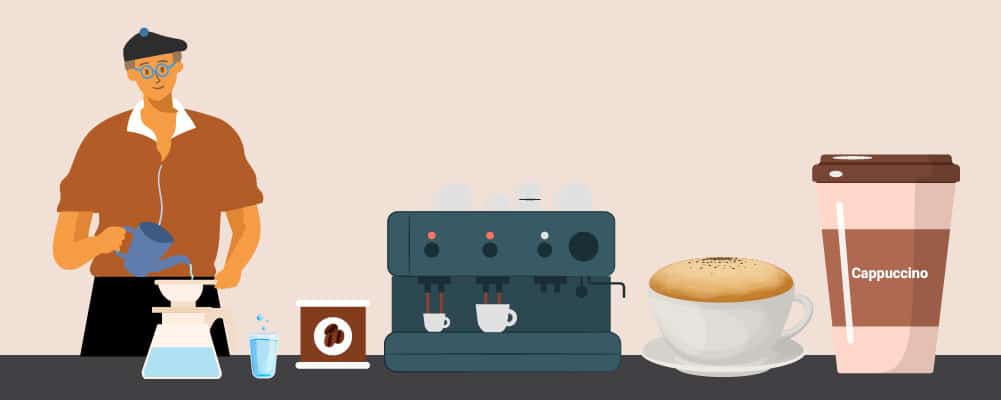
This Italian coffee is one of the most commonly found types across the world. While the composition of it slightly differs across coffee shops, the consensus is that it is ⅓ espresso, ⅓ steamed milk, and ⅓ foam. A skilled barista will be able to make distinct layers between the espresso, milk, and foam.
This drink is usually served in a six-ounce cup and is a part of a typical Italian breakfast. It is uncommon to find cappuccinos served with any other meal in Italy. Before the 1930s, cappuccinos were largely unknown outside of Italy.
The name cappuccino comes from the clothing of the Capuchin friars. Their robes were a red/brown color which fit with the color of the coffee before the milk was added.
Cappuccinos are usually smaller than lattes and while they don’t feature the iconic late art, there is usually a sprinkle of cinnamon or cocoa powder. If you’re lucky then it is sprinkled through a stencil to create a nice design.
Mocha Latte
A mocha latte is essentially coffee and hot chocolate mixed together. The chocolate is added to the coffee as either a powder, syrup or just melted chocolate. It is wonderfully sweet and perfect for people who want a hot chocolate but also a caffeine boost.
Coffee and chocolate are also complementary flavors, so the addition of the coffee enhances the chocolate flavor. It is commonly served in a glass instead of a mug.
Typical café mochas are made from an espresso base with cocoa powder and sugar added. Steamed milk is then poured on top, it varies across cafés if any foam is added. The whole drink is then topped with whipped cream and a dusting of cocoa powder.
The name comes from the city of Mocha in Yemen which was one of the earliest involved in the coffee trade. This is because the beans from this area had a distinct chocolatey aftertaste.
Some varieties of mocha involve double shots of espresso or white chocolate powder.
Turkish Coffee
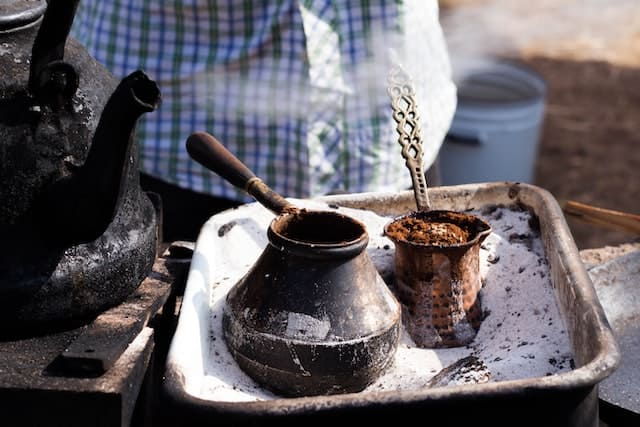
Photo by Gabriele Stravinskaite
Turkish coffee is defined by its brewing method, rather than how it is served. It is made by boiling water with fine, medium roast coffee grounds in a wide bottom coffee pot called a cezve. The pot is heated over hot sand instead of fire.
As it boils a thick foam is created which is transferred to a cup. There is no filtering involved which gives the coffee a thick consistency and a distinct roasted taste.
Sugar is usually added during the boiling process or after the drink has been served. You have to specify what level of sweetness you want as it is usually quite sweet.
Due to the lack of filtering, the coffee grounds are left at the bottom of the cup. Some people can have their fortune told through these coffee grounds. The cup is left to cool upside down on the saucer and the grounds are read on the saucer. This practice is called tasseography and is also performed with tea leaves or wine sediments.
Turkish coffee is also a part of a traditional Turkish wedding ceremony. The groom’s parents will visit the potential wife’s family to ask for her hand in marriage to their son, and for a blessing of the upcoming wedding. While this meeting is happening, the bride-to-be will serve coffee to their guests.
Macchiato
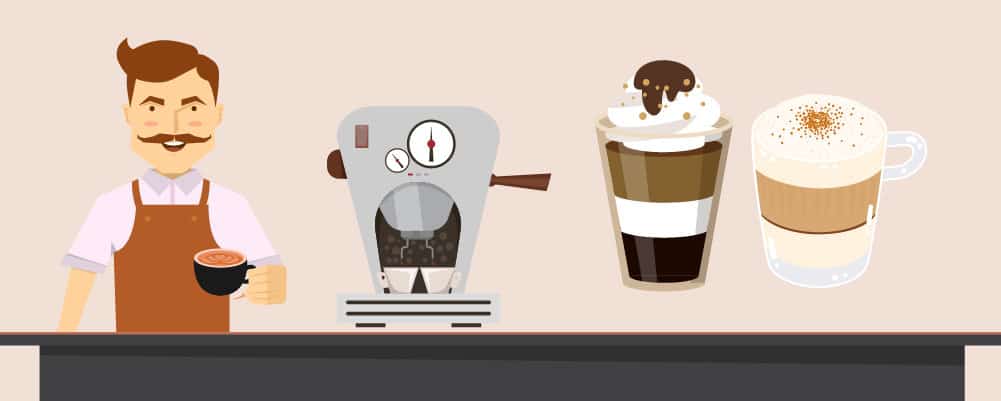
Espressos are a common afternoon coffee in Italy, but macchiatos also get a pass. This is because they are very similar to espressos. Macchiato is an espresso that has a touch of steamed milk or foam added to it. It varies across cafés if a drop of milk or foam is used. Like an espresso, macchiatos are served in small glasses.
Originating in the 1980s, macchiatos were named to help baristas understand the difference between them and espressos. Macchiato can be translated to ‘stained’, ‘spotted’, or ‘marked’, in reference to how the milk marks the espresso.
This tiny amount of milk gives macchiatos the highest ratio of espresso to milk when compared to other drinks with the same ingredients.
You are also able to get a latte macchiato, which is the exact opposite of a macchiato. It is primarily steamed milk with a drop of espresso added.
Café Cubano
Originating from Cuba, this espresso drink is distinct for its sweet taste and creamy texture. This ‘cream’ is formed when the first drops of the espresso are whipped with brown sugar. The espresso is then poured over the foam which then floats to the top.
Instead of being made in an espresso machine, café Cubanos are brewed using a stovetop pot called a Moka. Unlike other coffee drinks which are consumed for a caffeine pick-me-up, café Cubanos are more of a social drink with a large pot being made to share amongst friends.
Caffe Crema
Switzerland is the seventh largest coffee consumer in the world with 17.42 lbs per capita, so it makes sense that there is a coffee drink that originates from the southern part of it and northern Italy. Despite its popularity in these countries, Caffe crema is generally unknown in English-speaking countries.
Despite the name, there is no cream or milk involved in the making of this drink. It is similar to an espresso but it involves coarser grounds that aren’t so tightly packed. This gives it a different flavor profile and strength from regular espresso.
The name Caffe crema used to be the original name for an espresso before a distinction was made between the two. Caffe crema is served in a large cup and is also the default black coffee in Germany.
Other Coffee Drinks
These 20 are by no means the only coffee drinks you will find. Here are a few more to wet your palate either at home or at Starbucks or your local coffee shop:
- Starbucks Pink Drink – a popular former secret menu refresher
- Cafe Misto – an equal mix of coffee and steamed milk
- Salted Caramel Cream Cold Brew – cold brew coffee plus ice vanilla sweet cream and salted caramel
- Starbucks drinks with no caffeine – when you don’t want the extra jitters
- Hot Starbucks drinks – the best warm beverages on the iconic chains menu
- Frappuccino Roast – powdered dark roast coffee dissolved in water and mixed with flavored syrups and cream
Summary
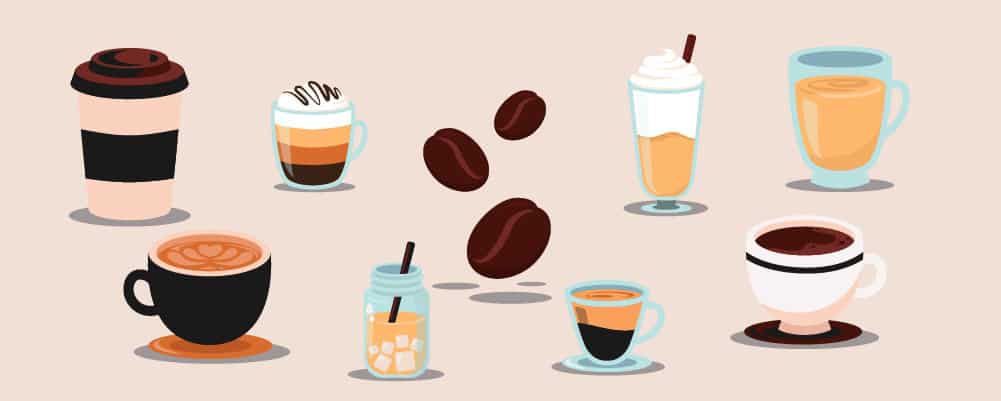
Hopefully, this list has inspired you to try a new type of coffee the next time you go to a café. You can even try them all over a couple of months as coffee is shown to decrease the risk of depression by 8%, so not only are you treating your taste buds, you’re helping your mental health.
The goal of this guide is to allow you to never be confused in a coffee shop again. Well, as unconfused as you can be until you look at the seasonal items menu!
Coffee has a deep and interesting history dating back to the 15th century and evolving with cultures across the world. So it is no wonder that there are so many types that have been created from a single genus of plant.
The number of coffee types and variations is proof that this simple bean can connect so many people across the world, and in such a delicious way. The appreciation for a good cup of coffee is a universal language like no other.
Coffee Has Never Read This Good!
Sign up for a FREE newsletter to the best home brewing tips and guides
Thank you for subscribing to The Cup Coffee House Crew! There's a surprise in your Inbox 🙂
Something went wrong.
- About the Author
- Latest Posts

“Jules” is a pharmacist by day and investor, writer, and health nut by night. When he’s not sipping on some coffee laced with MCT oil during an 18 hour fast, he is writing about how to get your coffee grind on or playing Monopoly with his 2 boys and wife. Ahh…life is good!
